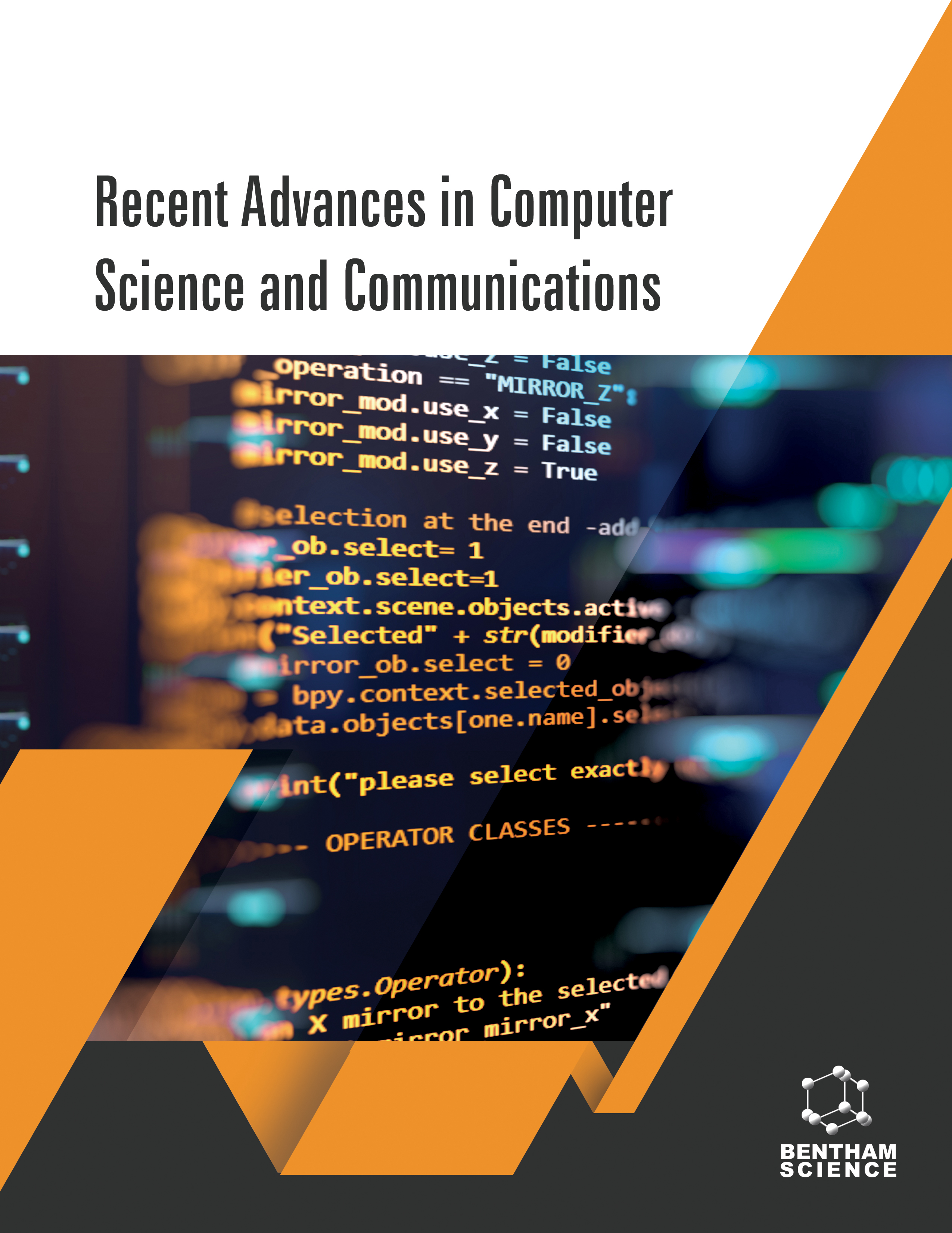- Home
- A-Z Publications
- Recent Advances in Computer Science and Communications
- Previous Issues
- Volume 16, Issue 9, 2023
Recent Advances in Computer Science and Communications - Volume 16, Issue 9, 2023
Volume 16, Issue 9, 2023
-
-
An Integrated Approach for Analysis of Electronic Health Records Using Blockchain and Deep Learning
More LessAuthors: Pooja Singhal, Shelly Gupta, Deepak and Jagendra SinghBlockchain is used to assess health records digitally, preserving the security and immutability of the records. The goal of this study is to make it easier for patients to access their medical records and to send them alert messages about important dates for their check-ups, healthy diet, and appointments. To achieve the above-mentioned objective, an integrated approach using Blockchain and Deep learning is initiated. The fi Read More
-
-
-
Survey on the Techniques for Classification and Identification of Brain Tumour Types from MRI Images Using Deep Learning Algorithms
More LessAuthors: Gayathri D. K. and Kishore BalasubramanianA tumour is an uncontrolled growth of tissues in any part of the body. Tumours are of different types and characteristics and have different treatments. Detection of a tumour in the earlier stages makes the treatment easier. Scientists and researchers have been working towards developing sophisticated techniques and methods for identifying the form and stage of tumours. This paper provides a systematic literat Read More
-
-
-
Performance Challenges and Solutions in Big Data Platform Hadoop
More LessAuthors: Balraj Singh, Harsh K Verma and Vishu MadaanBackground: The present era demands continuous support to bring improvements in executing complex analytics on large-scale data and to work beyond traditional systems. Objective: The need for processing diverse data types and solutions for different domains of the industry is rising. Such needs increase the requirement for sophisticated techniques and methods to enhance the existing platforms and mechanisms further. It Read More
-
-
-
Multimedia Transfer Over Wi-Fi Direct Based on Fuzzy Clustering for Vehicular Communications
More LessAuthors: Mohamed Ezzat, Hesham A. Hefny and Ammar MohmmedIntroduction: Wi-Fi Direct technology enables users to share services in groups, and support Service discovery at the data link layer before creating a P2P Group, and it can be used as a collaborative application integrated into vehicles for multimedia transfer and group configuration between V2X. Compared to cellular networks, Wi-Fi Direct offers a high transmission data rate at a cheaper cost. However, there are numerous h Read More
-
-
-
A Deep Learning Model to Detect Fake News about COVID-19
More LessAuthors: Selva B. Shanmugavel, Kanniga Devi Rangaswamy and Muthiah MuthukannanAims/Background: Twitter has rapidly become a go-to source for current events coverage. The more people rely on it, the more important it is to provide accurate data. Twitter makes it easy to spread misinformation, which can have a significant impact on how people feel, especially if false information spreads around COVID-19. Methodology: Unfortunately, twitter was also used to spread myths and misinformation about th Read More
-
-
-
Enhancing Recommendation System using Ontology-based Similarity and Incremental SVD Prediction
More LessAuthors: Sajida Mhammedi, Noreddine Gherabi, Hakim E. Massari and Mohamed AmnaiBackground: With the explosion of data in recent years, recommender systems have become increasingly important for personalized services and enhancing user engagement in various industries, including e-commerce and entertainment. Collaborative filtering (CF) is a widely used approach for generating recommendations, but it has limitations in addressing issues such as sparsity, scalability, and prediction errors. Methods: Read More
-
-
-
Mining Roles Based on User Dynamic Operation Logs
More LessAuthors: Xiaopu Ma, Qinglei Qi, Li Zhao, Fei Ning and He LiBackground: If we rely solely on whether to assign permissions together to determine roles, the roles we generate may not necessarily reflect the needs of the system. Therefore, the role generation process can be done based on user-to-permission dynamic relationships, such as user dynamic operation logs, thus providing the motivation for this work. Methods: In our paper, we introduce a special generalization process and a fr Read More
-
Most Read This Month
Article
content/journals/rascs
Journal
10
5
false
en


